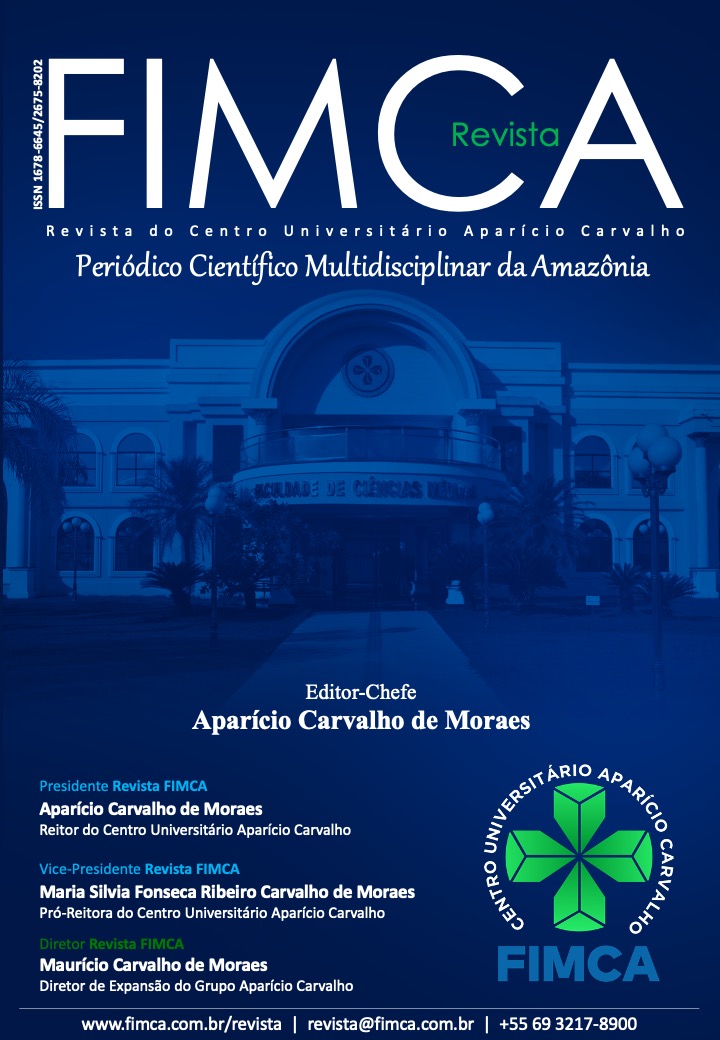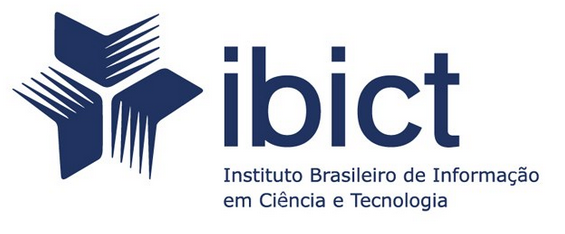FISIOPATOLOGIA E EPIDEMIOLOGIA DO HTLV-1 E HTLV-2: UMA REVISÃO SISTEMÁTICA
PATHOPHYSIOLOGY AND EPIDEMIOLOGY OF HTLV-1 AND HTLV-2: A SYSTEMATIC REVIEW
DOI:
https://doi.org/10.37157/fimca.v9i3.491Palavras-chave:
HTLV-1 , HTLV-12, epidemiologia, diagnóstico, fisiopatologiaResumo
Os vírus linfotrópicos de células T humanas são altamente associados à oncogenicidade, classificados em quatro tipos (HTLV-1, 2, 3 e 4) dos quais os mais relevantes são HTLV-1 e HTLV-2 devido a maior associação ao desenvolvimento clínico crônico da patologia influenciando a oncogênese nos seus hospedeiros. A epidemiologia desses vírus é altamente difusa apesar de apresentarem perfis endêmicos em algumas regiões do planeta, sua transmissão pode ocorrer de várias formas incluindo a sexual e métodos para diagnóstico são extremamente importantes para o avanço na detecção do vírus e início do tratamento para a prevenção do desenvolvimento da doença. Diante disso, foi realizada uma revisão sistemática de literatura afim de reunir estudos que abordem de forma abrangente a epidemiologia de HTLV-1 e 2, sua fisiopatologia, transmissão e diagnóstico. Foram realizadas pesquisas até abril de 2022 dos quais foram identificados 2.379 estudos e destes apenas 27 atenderam todos os critérios para avaliação do texto completo. Foi possível concluir que há uma vasta gama de estudos significativos e importantes abordando o impacto de HTLV-1 e 2 nas populações, há uma grande deficiência em relação à estudos atuais que abordem a atualização de diversas dúvidas que ainda rodeiam temáticas relacionadas a estes vírus principalmente de cunho epidemiológico, resultando em possíveis atrasos no desenvolvimento de novas tecnologias para o diagnóstico e combate viral.
The human T-cell lymphotropic viruses are highly associated with oncogenicity, classified into four types (HTLV-1, 2, 3, and 4) of which the most relevant are HTLV-1 and HTLV-2 due to the greater association with the chronic clinical development of the pathology influencing oncogenesis in their hosts. The epidemiology of these viruses is highly diffuse despite their endemic profiles in some regions of the planet. Their transmission can occur in several ways, including sexual transmission, and diagnostic methods are extremely important for the advancement in virus detection and initiation of treatment to prevent the development of the disease. Therefore, a systematic review of the literature was carried out to gather studies that comprehensively address the epidemiology of HTLV-1 and 2, its pathophysiology, transmission, and diagnosis. Searches were performed until April 2022, of which 2,379 studies were identified, and of these only 27 met all the criteria for full-text evaluation. It was possible to conclude that there is a wide range of significant and important studies addressing the impact of HTLV-1 and 2 in the populations, there is a great deficiency in relation to current studies that address the update of several doubts that still surround themes related to these viruses mainly of epidemiological nature, resulting in possible delays in the development of new technologies for diagnosis and viral combat.
Referências
Brito WR dos S, Cardoso-Costa G de L, Roland Junior LM, Pereira KAS, Lopes FT, Santos BC dos, et al. Prevalence and Risk Factors for HTLV-1/2 Infection in Quilombo Remnant Communities Living in the Brazilian Amazon. Frontiers in Public Health 2022;10:734.
Einsiedel L, Woodman RJ, Flynn M, Wilson K, Cassar O, Gessain A. Human T-Lymphotropic Virus type 1 infection in an Indigenous Australian population: Epidemiological insights from a hospital-based cohort study. BMC Public Health. 2016;16(1):1–11.
Fernando L, Machado A, Roberto De Souza Fonseca R, Freitas Queiroz MA, Branco Oliveira-Filho A, Maria I, et al. The Epidemiological Impact of STIs among General and Vulnerable Populations of the Amazon Region of Brazil: 30 years of Surveillance. Viruses 2021;13(5):855.
Gallo RC, Tagaya Y. Reflections on Some of the Exceptional Features of HTLV-1 and HTLV-1 Research: A Perspective. Frontiers in Immunology. 2022;13:1145.
Gaudray G, Gachon F, Basbous J, Biard-Piechaczyk M, Devaux C, Mesnard JM. The Complementary Strand of the Human T-Cell Leukemia Virus Type 1 RNA Genome Encodes a bZIP Transcription Factor That Down-Regulates Viral Transcription. Journal of Virology . 2002;76(24):12813–22.
Gessain A, Rua R, Betsem E, Turpin J, Mahieux R. HTLV-3/4 and simian foamy retroviruses in humans: discovery, epidemiology, cross-species transmission and molecular virology. Virology. 2013435(1):187–99.
Gligorijevi? V, Pržulj N. Methods for biological data integration: perspectives and challenges. Journal of The Royal Society Interface. 2015;12. 20150571.
Gomes Y, Caterino-De-Araujo A, Campos K, Gonçalves MG, Leite AC, Lima MA, et al. Loop-Mediated Isothermal Amplification (LAMP) Assay for Rapid and Accurate Confirmatory Diagnosis of HTLV-1/2 Infection. Viruses 2020, Vol 12, Page 981. 2020;12(9):981.
Gonçalves MG, Fukasawa LO, Campos KR, Higa FT, Caterino-de-Araujo A. Development and Validation of Multiplex Quantitative Real-Time PCR Assays for Simultaneous Detection and Differentiation of HTLV-1 and HTLV-2, Using Different PCR Platforms and Reagent Brands. Frontiers in Microbiology. 2022;13:355.
Ishak R, de Oliveira Guimarães Ishak M, Azevedo VN, Almeida Machado LF, Cayres Vallinoto IM, Freitas Queiroz MA, et al. HTLV in South America: Origins of a silent ancient human infection. Virus Evol . 2020;6(2):veaa053
Ishak R, de Oliveira Guimarães Ishak M, Vallinoto ACR. The challenge of describing the epidemiology of HTLV in the Amazon region of Brazil. Retrovirology 2020;17(1):1–10.
Martel M, Gotuzzo E. HTLV-1 Is Also a Sexually Transmitted Infection. Frontiers in Public Health. 2022;10:749.
Martinez MP, Al-Saleem J, Green PL. Comparative virology of HTLV-1 and HTLV-2. Retrovirology 2019;16(1):1–12.
Moreno C, Balangero M, Barbás MG, Cudolá A, Gallego S. Diagnóstico serológico de HTLV-1/2: combinación de técnicas de tamizaje para definir el estatus serológico en donantes de sangre. Revista Argentina de Microbiología. 2013;45(3):165–8.
Oliveira-Filho AB, Araújo APS, Souza APC, Gomes CM, Silva-Oliveira GC, Martins LC, et al. Human T-lymphotropic virus 1 and 2 among people who used illicit drugs in the state of Pará, northern Brazil. Sci Rep . 2019;9(1):14750
Poiesz BJ, Ruscetti FW, Gazdar AF, Bunn PA, Minna JD, Gallo RC. Detection and isolation of type C retrovirus particles from fresh and cultured lymphocytes of a patient with cutaneous T-cell lymphoma. Proc Natl Acad Sci U S A . 1980;77(12):7415–9.
Pourrezaei S, Shadabi S, Gheidishahran M, Rahimiforoushani A, Akhbari M, Tavakoli M, et al. Molecular epidemiology and phylogenetic analysis of human t-lymphotropic virus type 1 in the tax gene and it association with adult t-cell leukemia/lymphoma disorders. Iranian Journal of Microbiology. 2021;13(4):509–17.
Rosadas C, Brites C, Arakaki-Sanchez D, Casseb J, Ishak R. Brazilian Protocol for Sexually Transmitted Infections 2020: human T-cell lymphotropic virus (HTLV) infection. Rev Soc Bras Med Trop. 2021;54:1-16.
Stufano A, Jahantigh HR, Cagnazzo F, Centrone F, Loconsole D, Chironna M, et al. Work-Related Human T-lymphotropic Virus 1 and 2 (HTLV-1/2) Infection: A Systematic Review. Viruses 2021;13(9):1753.
Tagaya Y, Matsuoka M, Gallo R. 40 years of the human T-cell leukemia virus: past, present, and future. F1000Research 2019;8:228.
Thorstensson R, Albert J, Andersson S. Strategies for diagnosis of HTLV-I and -II. Transfusion (Paris). 2002;42(6):780–91.
Vallinoto ACR, Ishak MOG, Azevedo VN, Vicente ACP, Otsuki K, Hall WW, et al. Molecular Epidemiology of Human T-Lymphotropic Virus Type II Infection in Amerindian and Urban Populations of the Amazon Region of Brazil. Human Biology. 2002;74(5):633–44.
Willems L, Hasegawa H, Accolla R, Bangham C, Bazarbachi A, Bertazzoni U, et al. Reducing the global burden of HTLV-1 infection: An agenda for research and action. Antiviral Research. 2017;137:41–8.
WORLD HEALTH ORGANIZATION: Como funcionam as vacinas? Disponível em: <https://www.who.int/pt/news-room/feature-stories/detail/how-do-vaccines-work>.
Zhang LL, Wei JY, Wang L, Huang S le, Chen JL. Human T-cell lymphotropic virus type 1 and its oncogenesis. Acta Pharmacologica Sinica 201738(8):1093–103.
Publicado
Como Citar
Edição
Seção
A Revista FIMCA disponibiliza seus artigos e resumos para livre acesso de forma permanente e gratuita nos termos da Creative Commons Attribution License, permitindo que a sociedade possa compartilhar (copiar e redistribuir o material em qualquer suporte ou formato para qualquer fim, mesmo que comercial) e adaptar (remixar, transformar, e criar a partir do material para qualquer fim, mesmo que comercial), desde que seja dado o devido crédito apropriado, provendo um link para a licença e indicar se mudanças foram feitas.
Vale a pena ressaltar, que mesmo que o material seja transformado, modificado, ou der origem a outro material, este deve ser distribuido respeitando obrigatoriamente a citação do original nos termos da licença CC BY-AS 4.0 DEED.

















